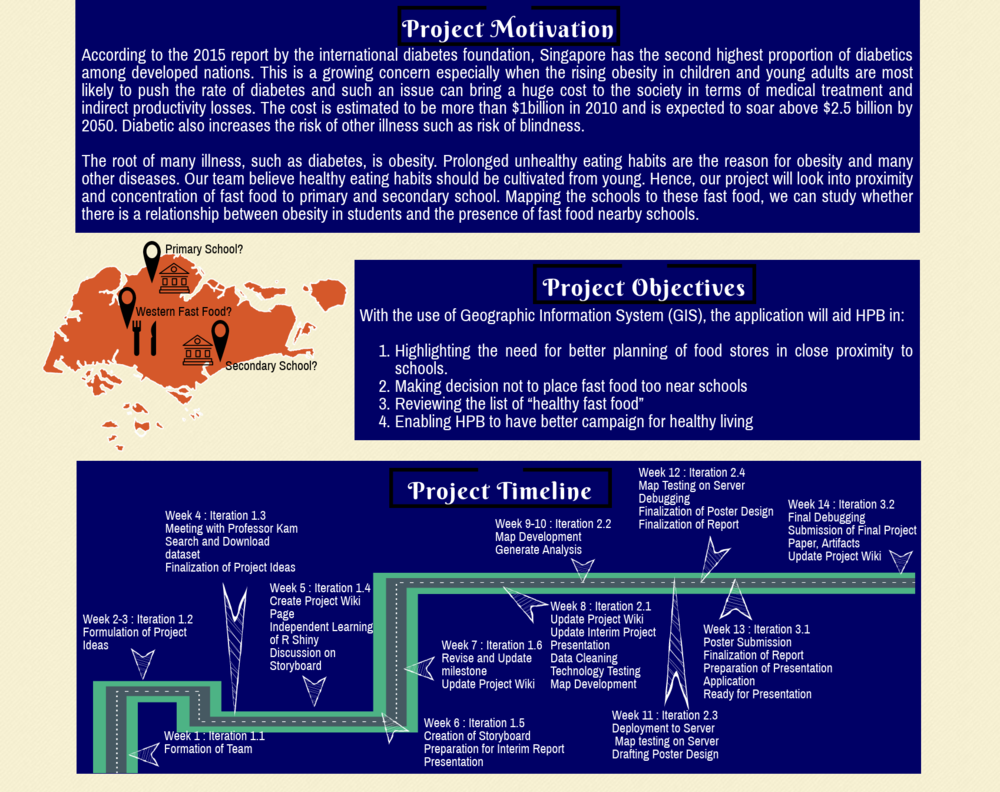Difference between revisions of "Access-the-Excess Proposal"
| Line 137: | Line 137: | ||
<div style="background: #46566E; padding: 20px; line-height: 0.3em; text-indent: 16px;letter-spacing:0.1em;font-size:20px"><font color=#fbfcfd face="Arial Narrow">Project References to Related Work</font></div> | <div style="background: #46566E; padding: 20px; line-height: 0.3em; text-indent: 16px;letter-spacing:0.1em;font-size:20px"><font color=#fbfcfd face="Arial Narrow">Project References to Related Work</font></div> | ||
<div style="margin:0px; padding: 10px; background: #f2f4f4; font-family: Arial Narrow; border-radius: 7px; text-align:left"> | <div style="margin:0px; padding: 10px; background: #f2f4f4; font-family: Arial Narrow; border-radius: 7px; text-align:left"> | ||
| − | <b>The team has conducted a literature review to help us understand our project better.</b><br> | + | <b>The team has conducted a literature review to help us understand our project better.</b><br><br> |
The development of public health GIS applications, which include those that deals with obesity have increased over the years due to wide availability of geocoded location and health data which makes the use of GIS in public heath more sophisticated. | The development of public health GIS applications, which include those that deals with obesity have increased over the years due to wide availability of geocoded location and health data which makes the use of GIS in public heath more sophisticated. | ||
| − | <br> | + | <br><br> |
Katie M. Booth, Megan M. Pinkston, Walker S. Carlos Poston conducted a study on the relationship between the built environment and obesity. The factors in the built environment that is included in the study are the facilities that encourage or hinder physical activity and healthy eating such as the density of fast food restaurants. The address of fast food restaurants and children homes are mapped and spatial relationship is calculated using the GIS. | Katie M. Booth, Megan M. Pinkston, Walker S. Carlos Poston conducted a study on the relationship between the built environment and obesity. The factors in the built environment that is included in the study are the facilities that encourage or hinder physical activity and healthy eating such as the density of fast food restaurants. The address of fast food restaurants and children homes are mapped and spatial relationship is calculated using the GIS. | ||
| − | <br> | + | <br><br> |
Brian E. Saelens, PhD, James F. Sallis, PhD,* Lawrence D. Frank, PhD, Sarah C. Couch, PhD, RD, Chuan Zhou, PhD, Trina Colburn, PhD, Kelli L. Cain, MA, James Chapman, MSCE, and Karen Glanz, PhD, MPH conducted a study to evaluate the weights of the adults and the children according to the neighbourhood types which is measured based on the level of physical activity and nutrition environment. The purpose of the research is to identify the neighbourhood attributes that are the main causes of childhood obesity. | Brian E. Saelens, PhD, James F. Sallis, PhD,* Lawrence D. Frank, PhD, Sarah C. Couch, PhD, RD, Chuan Zhou, PhD, Trina Colburn, PhD, Kelli L. Cain, MA, James Chapman, MSCE, and Karen Glanz, PhD, MPH conducted a study to evaluate the weights of the adults and the children according to the neighbourhood types which is measured based on the level of physical activity and nutrition environment. The purpose of the research is to identify the neighbourhood attributes that are the main causes of childhood obesity. | ||
| − | <br> | + | <br><br> |
In ‘Food desert and childhood obesity’, Treuhaft S, Karpyn A. have used a combination of GIS and cluster analysis to determine the impact of food desert on obesity rates within the school district. The neighbourhood stores such as fast food restaurants is taken into measurement as well. ArcGIS is used for the measurement of the distance between each census block centroid to the nearest food stall. The Census Geographic Identifier (CGI) file was used to determine the location of the block centroid, whether is it in the urban or rural area and to determine the population within the block. | In ‘Food desert and childhood obesity’, Treuhaft S, Karpyn A. have used a combination of GIS and cluster analysis to determine the impact of food desert on obesity rates within the school district. The neighbourhood stores such as fast food restaurants is taken into measurement as well. ArcGIS is used for the measurement of the distance between each census block centroid to the nearest food stall. The Census Geographic Identifier (CGI) file was used to determine the location of the block centroid, whether is it in the urban or rural area and to determine the population within the block. | ||
Lorna K.Fraser and Kimberley L Edwards analyse the association between childhood obesity and the accessibility of food outlets in the UK. ArcGIS is used to calculate the straight line distance between nearest fast food outlet from the home address of the children. | Lorna K.Fraser and Kimberley L Edwards analyse the association between childhood obesity and the accessibility of food outlets in the UK. ArcGIS is used to calculate the straight line distance between nearest fast food outlet from the home address of the children. | ||
| − | <br> | + | <br><br> |
Peter L.Day and Jamie Pearce examine the degree of spatial clustering in proximity to schools . Spatstat package in R is used to measure the spatial point patterns. Using ArcGIS, the address of the fast food outlets and the schools are geocoded. A 400m and 800m buffer is created to measure the proportion of fast-food outlets located near the school with an estimated walking time of 5 and 10 minutes. | Peter L.Day and Jamie Pearce examine the degree of spatial clustering in proximity to schools . Spatstat package in R is used to measure the spatial point patterns. Using ArcGIS, the address of the fast food outlets and the schools are geocoded. A 400m and 800m buffer is created to measure the proportion of fast-food outlets located near the school with an estimated walking time of 5 and 10 minutes. | ||
| − | <br> | + | <br><br> |
| + | <b>References</b><br><br> | ||
| + | http://krex.k-state.edu/dspace/bitstream/handle/2097/15292/HeinrichAmerDietetAssoc2005.pdf?sequence=3 | ||
| + | https://www.ncbi.nlm.nih.gov/pmc/articles/PMC3332077/ | ||
| + | http://bb2sz3ek3z.search.serialssolutions.com/?sid=google&auinit=PA&aulast=Alviola+IV&atitle=Food+deserts+and+childhood+obesity&id=doi:10.1093/aepp/pps035&title=Applied+economic+perspectives+and+policy&volume=35&issue=1&date=2012&spage=106&issn=2040-5790 | ||
| + | https://www-sciencedirect-com.libproxy1.nus.edu.sg/science/article/pii/S1353829210000948?_rdoc=1&_fmt=high&_origin=gateway&_docanchor=&md5=b8429449ccfc9c30159a5f9aeaa92ffb&ccp=y#! | ||
</div> | </div> | ||
<br> | <br> | ||
Revision as of 15:04, 7 March 2018
|
No. |
Key Challenges |
Description |
Solution |
|
1. |
Difficulties faced in finding readily available data |
There is no data available from data.gov on the locations of Western Fast Food Restaurants |
•Obtain the postal codes of the Western Fast Food Restaurants from Google Maps and list them down into the Excel file |
|
2. |
Unfamiliar with R Shiny |
The team is completely new to R programming language |
•Independent learning starting from Iteration 1.4, Week 5 |
|
3. |
Unfamiliarity with spatial analysis techniques and difficulties faced during application |
The team is completely new to Geospatial Analysis |
•Independent learning |
|
4. |
Differing interpretations of project requirements |
The team may have faced misunderstandings on the requirements of the project |
•Internal meetings |
|
No. |
Data |
Source |
Data Type/Method |
|
1. |
|||
|
2. |
|||
|
3. |
The team has conducted a literature review to help us understand our project better.
The development of public health GIS applications, which include those that deals with obesity have increased over the years due to wide availability of geocoded location and health data which makes the use of GIS in public heath more sophisticated.
Katie M. Booth, Megan M. Pinkston, Walker S. Carlos Poston conducted a study on the relationship between the built environment and obesity. The factors in the built environment that is included in the study are the facilities that encourage or hinder physical activity and healthy eating such as the density of fast food restaurants. The address of fast food restaurants and children homes are mapped and spatial relationship is calculated using the GIS.
Brian E. Saelens, PhD, James F. Sallis, PhD,* Lawrence D. Frank, PhD, Sarah C. Couch, PhD, RD, Chuan Zhou, PhD, Trina Colburn, PhD, Kelli L. Cain, MA, James Chapman, MSCE, and Karen Glanz, PhD, MPH conducted a study to evaluate the weights of the adults and the children according to the neighbourhood types which is measured based on the level of physical activity and nutrition environment. The purpose of the research is to identify the neighbourhood attributes that are the main causes of childhood obesity.
In ‘Food desert and childhood obesity’, Treuhaft S, Karpyn A. have used a combination of GIS and cluster analysis to determine the impact of food desert on obesity rates within the school district. The neighbourhood stores such as fast food restaurants is taken into measurement as well. ArcGIS is used for the measurement of the distance between each census block centroid to the nearest food stall. The Census Geographic Identifier (CGI) file was used to determine the location of the block centroid, whether is it in the urban or rural area and to determine the population within the block.
Lorna K.Fraser and Kimberley L Edwards analyse the association between childhood obesity and the accessibility of food outlets in the UK. ArcGIS is used to calculate the straight line distance between nearest fast food outlet from the home address of the children.
Peter L.Day and Jamie Pearce examine the degree of spatial clustering in proximity to schools . Spatstat package in R is used to measure the spatial point patterns. Using ArcGIS, the address of the fast food outlets and the schools are geocoded. A 400m and 800m buffer is created to measure the proportion of fast-food outlets located near the school with an estimated walking time of 5 and 10 minutes.
References
http://krex.k-state.edu/dspace/bitstream/handle/2097/15292/HeinrichAmerDietetAssoc2005.pdf?sequence=3
https://www.ncbi.nlm.nih.gov/pmc/articles/PMC3332077/
http://bb2sz3ek3z.search.serialssolutions.com/?sid=google&auinit=PA&aulast=Alviola+IV&atitle=Food+deserts+and+childhood+obesity&id=doi:10.1093/aepp/pps035&title=Applied+economic+perspectives+and+policy&volume=35&issue=1&date=2012&spage=106&issn=2040-5790
https://www-sciencedirect-com.libproxy1.nus.edu.sg/science/article/pii/S1353829210000948?_rdoc=1&_fmt=high&_origin=gateway&_docanchor=&md5=b8429449ccfc9c30159a5f9aeaa92ffb&ccp=y#!
We appreciate your comments. Thanks for helping us improve!
|
No. |
Name |
Date |
Comments |
|
1. |
Insert Name |
Insert Date |
Insert Comment |
|
2. |
Insert Name |
Insert Date |
Insert Comment |
|
3. |
Insert Name |
Insert Date |
Insert Comment |


